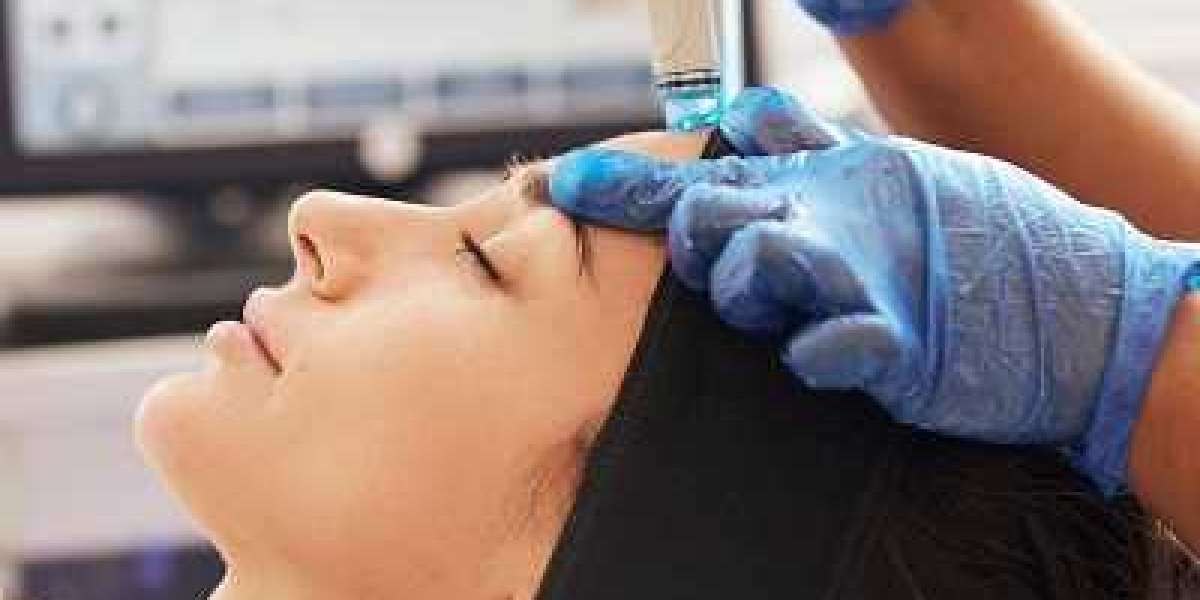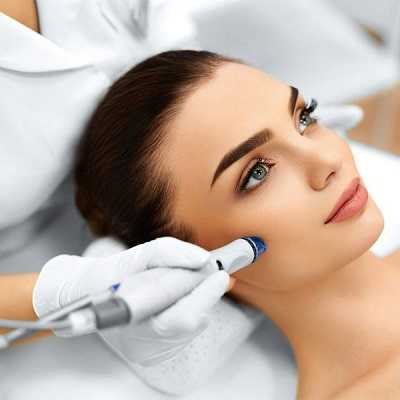Introduction
Sensitive skin is a common skin condition that affects people of all ages and ethnicities. In Oman, where the climate is harsh, with hot temperatures, high humidity, and exposure to intense sunlight, sensitive skin faces a unique set of challenges. Environmental stressors, such as dust, pollution, and extreme weather conditions, can further irritate and inflame the skin. This makes it essential to provide proper skincare that is not only effective but also gentle on the skin.
One such solution is the HydraFacial treatment. HydraFacial has gained significant attention in the beauty and skincare industry for its ability to offer deep cleansing, hydration, and rejuvenation in a gentle and non-invasive manner. Its ability to cater to various skin types, including sensitive skin, has made it a popular choice. However, when it comes to sensitive skin, special attention must be paid to the procedure's intensity, the products used, and post-care instructions.
This article explores the best practices for performing HydraFacial Treatment Oman on sensitive skin. We will cover how HydraFacial works, its benefits for sensitive skin, the best practices for those with delicate skin, and post-treatment care to ensure the best results.
Understanding HydraFacial
HydraFacial is a non-invasive facial treatment that uses patented technology to cleanse, exfoliate, extract, and hydrate the skin. It is designed to address a variety of skin concerns such as fine lines, wrinkles, hyperpigmentation, acne, and enlarged pores. The treatment involves the use of a multi-step process that includes:
- Cleansing and Exfoliation: The skin is first cleaned and exfoliated to remove dead skin cells and prepare the surface for further treatment.
- Acid Peel: A mild acid solution is applied to the skin to further exfoliate and help loosen debris and dead skin.
- Extraction: This step uses a gentle suction to extract impurities from the pores without causing irritation.
- Hydration and Antioxidant Application: The skin is then infused with hydration and antioxidant-rich serums to rejuvenate and nourish the skin.
What makes HydraFacial stand out is its ability to offer immediate results with minimal discomfort and downtime. The treatment is customizable to suit various skin concerns, including sensitive skin.
Why Sensitive Skin Requires Special Attention
Sensitive skin is often prone to irritation, redness, inflammation, and dryness. It reacts more readily to environmental stressors, skincare products, and other factors. In the context of sensitive skin, ingredients, treatments, and tools must be selected with care to avoid exacerbating skin reactions.
In Oman, the combination of sun exposure, high temperatures, and dry air can aggravate sensitive skin conditions. Common triggers for sensitive skin in Oman include:
- Sun exposure: The harsh sun can cause sunburns, dehydration, and redness.
- Dust and pollution: The dust and pollution from urban areas, along with sand particles from desert environments, can irritate the skin.
- Dehydration: The heat and humidity often lead to dehydration, which can worsen skin conditions like dryness and irritation.
- Harsh skincare products: Many skincare treatments are designed for more resilient skin types, and their strong ingredients can cause irritation when used on sensitive skin.
For individuals with sensitive skin, a treatment like HydraFacial can provide gentle yet effective results without exacerbating these issues. However, it is crucial to tailor the treatment to address the unique needs of sensitive skin to avoid irritation and discomfort.
Benefits of HydraFacial for Sensitive Skin
1. Non-Invasive and Gentle
One of the primary benefits of HydraFacial for sensitive skin is that it is a non-invasive treatment. Unlike traditional facials that may involve aggressive exfoliation or manual extractions, HydraFacial uses gentle suction and hydration to cleanse and rejuvenate the skin without causing trauma. For those with sensitive skin, this makes it an ideal choice because it minimizes the risk of flare-ups or irritation.
2. Deep Hydration
Sensitive skin is often prone to dehydration, which can lead to dryness, tightness, and an increased risk of irritation. HydraFacial provides intense hydration through the infusion of hyaluronic acid, peptides, and antioxidants that nourish and hydrate the skin. This deep hydration helps to calm and restore balance to sensitive skin, leaving it soft, smooth, and plump.
3. Customizable Treatment
HydraFacial is a highly customizable treatment. For individuals with sensitive skin, the practitioner can adjust the intensity of the exfoliation and select serums that are gentle on the skin. The use of soothing and calming serums can provide targeted care for sensitive skin, helping to reduce redness and irritation while providing the necessary hydration and nourishment.
4. Minimal Downtime
Unlike more invasive procedures, HydraFacial has minimal downtime. Patients can typically return to their daily activities immediately after the treatment. For those with sensitive skin, this is especially beneficial as it reduces the risk of prolonged irritation or discomfort, which may occur with other treatments that involve more aggressive techniques.
5. Targeting Multiple Skin Concerns
Sensitive skin may also suffer from various issues such as acne, pigmentation, and redness. HydraFacial can address these concerns by improving skin texture, reducing pore size, and providing a calming effect. This makes it a comprehensive treatment for those with multiple skin concerns, particularly in sensitive skin types.
Best Practices for HydraFacial on Sensitive Skin in Oman
While HydraFacial is generally safe for sensitive skin, following specific guidelines can ensure optimal results and minimize potential risks. Here are the best practices to consider when performing HydraFacial on sensitive skin, particularly in the challenging Omani environment.
1. Choose the Right Serum and Products
HydraFacial treatments involve the use of various serums. For sensitive skin, it is crucial to choose gentle and calming serums. Look for products that are fragrance-free, hypoallergenic, and designed for delicate skin. Key ingredients such as chamomile, aloe vera, and calendula are excellent for soothing sensitive skin. Additionally, opting for serums with antioxidants like Vitamin C can help protect sensitive skin from environmental stressors, which is essential in the harsh Omani climate.
2. Adjust the Intensity of Exfoliation
Sensitive skin can react negatively to aggressive exfoliation. The exfoliating step of HydraFacial often involves the use of mild acid peels, but for sensitive skin, these acids should be diluted or avoided altogether. A more conservative approach should be taken by using gentler exfoliants or opting for lower intensity exfoliation. A practitioner familiar with treating sensitive skin should adjust the strength and duration of the exfoliation phase accordingly.
3. Use of Sunscreen
After any facial treatment, especially in a country like Oman with intense sun exposure, protecting the skin from UV damage is critical. HydraFacial treatments leave the skin more receptive to environmental factors. Since sensitive skin is often more prone to sunburn and damage, applying a broad-spectrum sunscreen with SPF 30 or higher is essential post-treatment. Sunscreen should be re-applied regularly, particularly during the hot summer months.
4. Hydration Pre-Treatment
For optimal results, it is recommended that individuals with sensitive skin focus on hydration before undergoing a HydraFacial treatment. Dehydrated skin is more prone to irritation, and ensuring that the skin is well-hydrated before treatment can improve the effectiveness of the procedure. Adequate water intake, as well as using hydrating serums and moisturizers, can prepare the skin and reduce the risk of irritation.
5. Gentle Post-Treatment Care
After the HydraFacial treatment, sensitive skin requires special care to avoid further irritation. Avoid exposing the skin to direct sunlight, heat, or harsh weather for at least 24 hours post-treatment. Use soothing and calming moisturizers to keep the skin hydrated, and avoid using strong exfoliants or active ingredients like retinol for several days following the procedure.
In Oman, it is particularly important to protect the skin from heat and pollutants. Keeping the skin cool and shielded from external factors will aid the healing process and minimize the risk of inflammation.
6. Consult a Professional
Before undergoing HydraFacial, it is advisable to consult with a skincare professional who understands sensitive skin and can personalize the treatment to suit your needs. A knowledgeable practitioner will assess the skin type and concerns, customize the treatment, and provide tailored aftercare advice. This ensures that the procedure is as gentle and effective as possible, minimizing any risk of irritation or side effects.
Common Concerns and Myths about HydraFacial for Sensitive Skin
1. Is HydraFacial Too Harsh for Sensitive Skin?
HydraFacial is generally considered safe for sensitive skin, but the intensity of certain steps, such as exfoliation, should be adjusted to avoid causing irritation. For individuals with extremely sensitive skin or conditions like rosacea, it may be advisable to skip or modify the exfoliation stage. A trained professional will assess each case individually.
2. Can HydraFacial Help with Skin Redness?
HydraFacial can help reduce skin redness, as it has soothing properties. The antioxidants and hydrating serums used during the procedure can help calm the skin, reduce inflammation, and restore balance. However, individuals with conditions like rosacea may need to consult with a professional to customize the treatment to avoid flare-ups.
3. How Often Should Sensitive Skin Get HydraFacial?
For sensitive skin, it is recommended to space out HydraFacial treatments by 4-6 weeks to allow the skin to recover and maintain its natural balance. Over-treating the skin may lead to irritation, so it is essential to follow the advice of a skincare professional when determining the frequency of treatments.
Conclusion
HydraFacial is an effective and gentle skincare treatment that can work wonders for individuals with sensitive skin, especially in challenging environments like Oman. The treatment’s ability to hydrate, cleanse, and rejuvenate the skin without causing irritation makes it an ideal solution for those looking to address common skin concerns such as dryness, redness, and fine lines. However, special care must be taken to ensure that the procedure is customized to suit sensitive skin types, with attention to factors like serum selection, exfoliation intensity, and post-treatment care. By following the best practices outlined in this article, individuals with sensitive skin can enjoy the full benefits of HydraFacial and maintain a healthy, radiant complexion even in Oman’s harsh climate.














